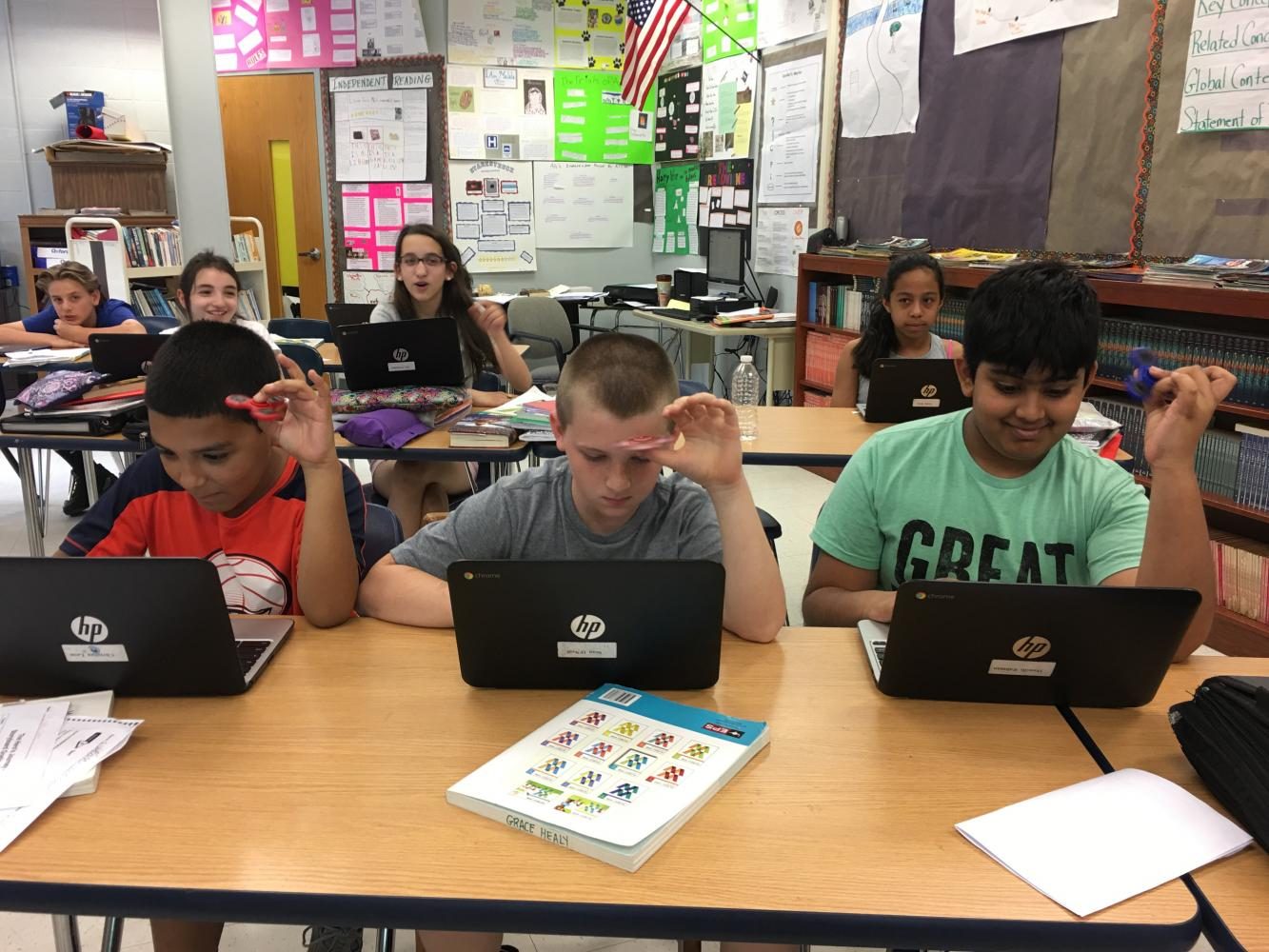Fidget Spinners: Toy or Tool? Dobbs Ferry Goes For a Spin
June 19, 2017
It’s late morning in the classroom, and sixth grade students are hungry and impatient. The lunch bell will ring any minute, and the student’s overall attention is waning. While his classmates are doodling, biting their nails or flipping pencils, a boy reaches into his desk and pulls out a peculiar object; a three-pronged lightweight spinner, which, with a flick of his finger against one prong, sends it spinning on his finger in a multicolored blur. With this simple contraption, the boy focuses on his teacher’s words and has laser-sharp attention in class. What is this miracle machine? It’s called a Fidget Spinner, and it’s appearing in classrooms all across the country.
The Fidget Spinner was developed by Antsy Labs, a technology and toy company that creates fidget-and-boredom-eliminating tools. After their previous kickstarter-originating success on the Fidget Cube–a small box with buttons, flips, and switches on every side–they gained even more popularity with the Fidget Spinner, which almost immediately became a phenomenon. “Some of the gadgets are designed to relieve Stress, Anxiety, ADD & ADHD, Autism,” says Elizabeth O’Brien and Brad Tuttle, authors of the online article “Meet the Fidget Spinner.”
Christian Leon is a sixth-grader who owns a fidget spinner of his own. “Some of them make a lot of noise, but {the new models} are not noticeable…But it helps you focus during tests, and that’s really helpful for {students} and also for kids who fidget a lot,” said Leon, taking out his own black-and-white spinner out of his pocket and spinning it. Leon told me how he had replaced the bearings–the inner rings of the spinner–with the bearings of other fidget spinners in order to spice up the colors and show it’s his. He advises other spinner-users who want to personalize their spinners to do what he did or paint theirs, though he advises that you use spray paint; “…Because the other paints can chip off.”
Leon is clearly one of the many fidget spinner fans. But in some classes, fidget spinners have been banned for numerous reasons.
“Once [Fidget Spinners] became the ‘in thing to do’, that’s when they started to become a distraction,” Ms. Hickey, the Individuals and Societies/Social Studies teacher, explained. “A kid that’s using it to help them would keep it under their desk…they’re not drawing attention to themselves. But in classes with anything from 20 to 28 kids, we need to keep distractions at a minimum.”
So is the fidget spinner a toy or a tool? The answer is that it depends on the student involved. Do they really need such a contraption? What will they accomplish with this mechanism in hand? If the answer is progress, then the spinner belongs in their hands. But if the answer is playtime, then the spinner isn’t right for them. It’s only the newest fad, after all. The fuss made about Silly Bandz, Rainbow Loom, bottle flipping and slime passed, and this will too.
So calm down, and take your new trinket for a spin!
